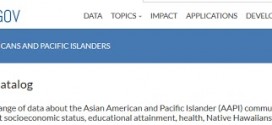By Surjeet Ahluwalia, Executive Director

On April 8, The Washington Post published two pieces that serve to reinforce stereotypes of Asian Americans: “Demographics shift at Thomas Jefferson High as Asians make up 66 percent of new class,” and “Why Asian American kids excel. It’s not ‘Tiger Moms.’” These headlines reinforce that Asian Americans excel academically – and while this may be true for some groups of Asian American students, it is not true for all. In particular, for low-income Asian Americans – a population that is growing in the U.S. – this broad generalization is often not true. When we reference Asians as a homogenous group, it does a disservice to young people who do not fit the mold and are struggling to get support.
Importantly, the piece on Thomas Jefferson High School does reference that only FOUR low-income students (students receiving free or reduced meals) were admitted to the school. This is the more important story. Low-income students of all races are not getting the educational support they need to reach the level of academic achievement to attend prestigious schools such as TJ. There are historical reasons for the differences we see by race in this country. Clearly, it is still necessary to examine differences by racial groups, but as we continue to become a more diverse nation, we need to look at how income intersects with race.
The piece, “Why Asian American kids excel. It’s not Tiger Moms,’” references a study of Chinese and Vietnamese American students in Los Angeles and says the findings show “young Asian Americans have all kinds of good role models to emulate. Their communities and families make sure they get extra help when they need it. Their families, even on limited resources, manage to seek out and move to neighborhoods with good schools.” Again, this is simply not the case for many low-income Asian American families. The study describes outcomes for the totality of Asian Americans, but actually reflects outcomes for a smaller subset of Asian Americans—Chinese and Vietnamese Americans in Los Angeles. Los Angeles is a place with relatively higher numbers of Chinese and Vietnamese Americans over many, many years. As such, stronger community networks have been established over time. The article even describes that parents have access to a “Chinese Yellow Pages” to look at school rankings. That kind of information is not available widely in many places that low-income Asian Americans live – such as in the DC metropolitan area.
When we paint Asian Americans, or any group at all with a broad brush, without acknowledging income, history, and contextual realities, we reinforce stereotypes that can reduce the opportunities for needed support. Race is just a construct that we rely on too readily in the United States to understand our complex world. As is always the case, there is more to the story.
 Asian Fortune Your source for all things Asian American
Asian Fortune Your source for all things Asian American



